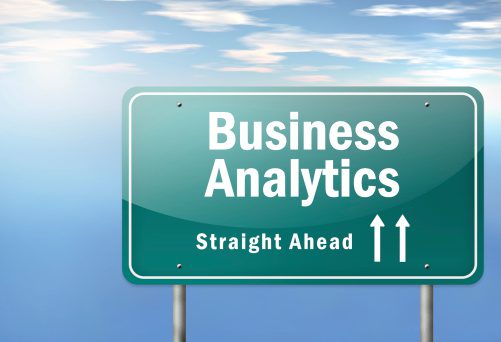Predictive analytics offers vast potential for organizations with the complexity, horsepower, and skillset to leverage the thousands of intersecting data points required for analysis — but is it truly a crystal ball for the future?

A few years ago you started hearing about “Big Data” all the time, and while you may not understand the term as much today, the need for hundreds if not thousands of data points continues to grow. Digital business thrives on personalization and the ability to have an in-depth knowledge of your customer — their buying habits, their needs, their life — so you can create the most relevant experience possible in the hopes of driving more sales. Today’s big buzzword is artificial intelligence (AI), and an ages-old but newly popular form of leveraging data to make assumptions about the future: predictive analytics. How likely is it that predictive analytics is truly a crystal ball into the future that will help you maximize your business growth and efficiency? The answer depends on some different factors.
What is Predictive Analytics?
Predictive analytics utilizes a range of techniques from statistics, machine learning, data mining, modeling and AI to make predictions about the future from current data points. However, just like with every project — the output is only as good as the input, so your data must be cleaned rigorously and reviewed regularly. Data scientists use theories from information technology, process management, and business to define patterns within the data and identify potential risks and opportunities in the future. Predictive analytics requires some deep number-crunching, as it attempts to establish relationships between a diverse data set and assigns scores, or weights, to the possibility that a particular scenario will occur in the future. Enterprise-scale organizations regularly employ predictive analytics to actually interpret vast quantities of data for their benefit – or forecast the future.
Benefits of Predictive Analytics
This new way of gazing into a digital crystal ball and “seeing around corners” has benefits far beyond allowing marketers to provide a next-best upsell to customers, and provides a way to determine long-term profitability and even predict potential shifts in market conditions. Perhaps one of the most universally applicable uses of predictive analytics for business is to take an educated guess at how customers will embrace the shifts away from bricks-and-mortar stores to an online store. Following millions of customers as they interact with a brand across social media, phone, web, television, email and in physical locations provides a growing body of knowledge that brands can take advantage of by leveraging vast quantities of data to predict where the actual purchase will be held. The benefits honestly go across the enterprise, as:
Predictive Analytics Process
Predictive intelligence requires firmly-defined relationships between structured data such as buying habits and demographic information and unstructured data such as social media interactions, call center notes, survey responses or sentiment analysis. Together, these proactive pieces of data allow data analysts to make likely scenarios based on data instead of merely a hunch, or guess. Over time, the body of gathered data provides deeper insight, but the overall process is a loop that begins with ingestion of the data, moves through reporting and analysis, then monitoring and eventually becomes a real prediction based on data over time. The assumptions are then fed back into the system and adjustments made based on whether the expected action became a reality, so the model can be continuously tweaked. Data mining and modeling for effective predictive analytics can be a cumbersome task, but once gathered — the data can be analyzed to begin telling the story of the future.
Prescriptive Analytics
The ability to automate complex decision making and proactively update recommendations is known as prescriptive analytics. While predictive analytics allow companies to get ahead of their customers, prescriptive analytics may allow organizations to leapfrog their competitors. These advanced data-driven models attempt to deliver targeted recommendations based on the propensity for individuals to take the desired action. Prescriptive analytics drive interactions with brands such as this: when you’re driving past your automotive dealership and hear a “ding” on your cell phone. The notification tells you that you’re due an oil change, and offers you a $5 discount on your next oil change.
The Future of Analytics
Analytics, in general, offer a bright future to organizations — the ability to understand customer needs, provide them with next-best actions, and provide context around behavior and other customer dynamics. The insight given by a deep dive into predictive and prescriptive analytics allow firms to maximize business value while driving customer engagement and increasing revenues for the brand. Mainstream applications are appearing on a daily basis that allows organizations of all sizes to take advantage of the benefits provided by analytics.
Want to take your customer interactions and business insight to the next level? Contact today at , or via email to . We work with organizations of all sizes to provide leading-edge predictive analytics to drive digital business transformation.